Methodology and country groups
The analysis of Section 4.1 uses the MIRAGRODEP CGE model – a global simulation model capturing multiple regions, sectors and international economic linkages. A full description of the MIRAGRODEP model, how it was expanded for this report and the data used are found in the background paper to this report.230 The classification of countries by income group is reported in Table A6.1 following the World Bank classification of countries by income level for 2021.33 It should be noted that the list of countries in Table A6.1 differs from the list provided in Table A4.1. In Section 4.1, the 2021 income classification is used as the analysis of policy scenarios focuses on recent years, from 2017 up to 2030. On the contrary, Section 3.1 takes a historical perspective on stocktaking of policy support, so it uses the most frequent income group category over the 2005–2018 period for each country.
TABLE A6.1COUNTRIES COVERED IN THE AG-INCENTIVES DATABASE BY THE COUNTRY INCOME GROUP CLASSIFICATION USED IN THE MODEL SIMULATIONS
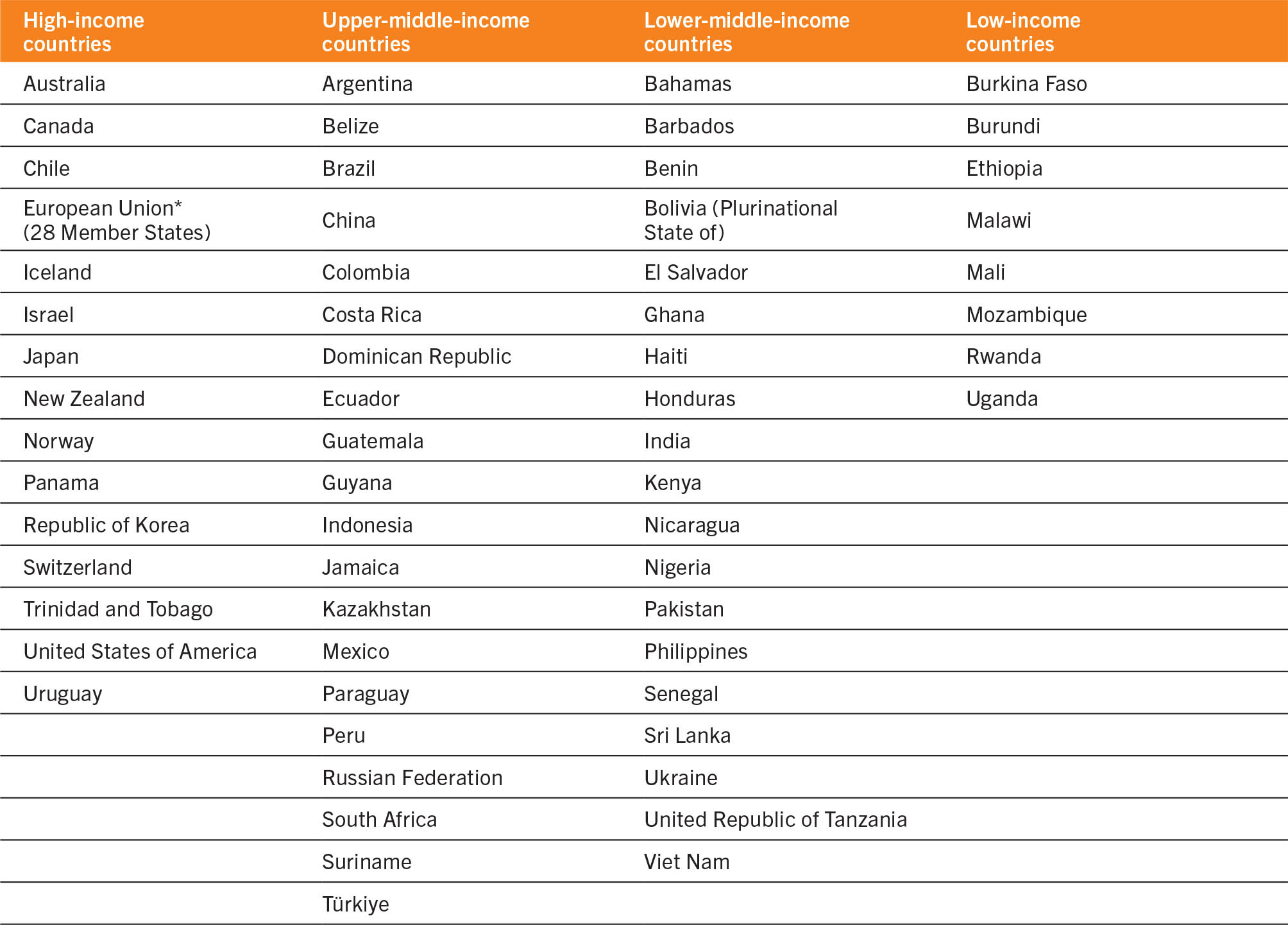
SOURCE: Glauber, J. & Laborde, D. (forthcoming). Repurposing food and agricultural policies to deliver affordable healthy diets, sustainably and inclusively: what is at stake? Background paper for The State of Food Security and Nutrition in the World 2022. FAO Agricultural Development Economics Working Paper 22-05. Rome, FAO.
The “Americas” region in Tables 8–13 of Section 4.1 includes HICs in Latin America and the Caribbean (Chile, Panama, Trinidad and Tobago, and Uruguay), plus Canada and the United States of America. Latin America and the Caribbean includes all countries in this region except HICs which are included in the group Americas.
Results from removing support
Results from two scenarios whereby support to agriculture is partially removed from the baseline scenario help reinforce the case for not eliminating such support. The discussion of the results of these two scenarios is presented in Section 4.1 of the report.
Results from fairly reallocating fiscal subsidies to producers
An alternative scenario measures what would happen if, instead of repurposing public support to agricultural producers to specifically support healthy diets, governments more fairly distribute fiscal subsidies to producers. More specifically, fiscal subsidies at the aggregate level would not be affected, but all commodities would receive the similar same level of support on a percent of value of production (VoP) basis. The biases of the model-based baseline scenario are removed. No changes to border measures or support through general government services are applied. The results are presented below and are discussed in Section 4.1 of the report.
TABLE A6.2Impact of removing border measures, 2030 (change with respect to the baseline
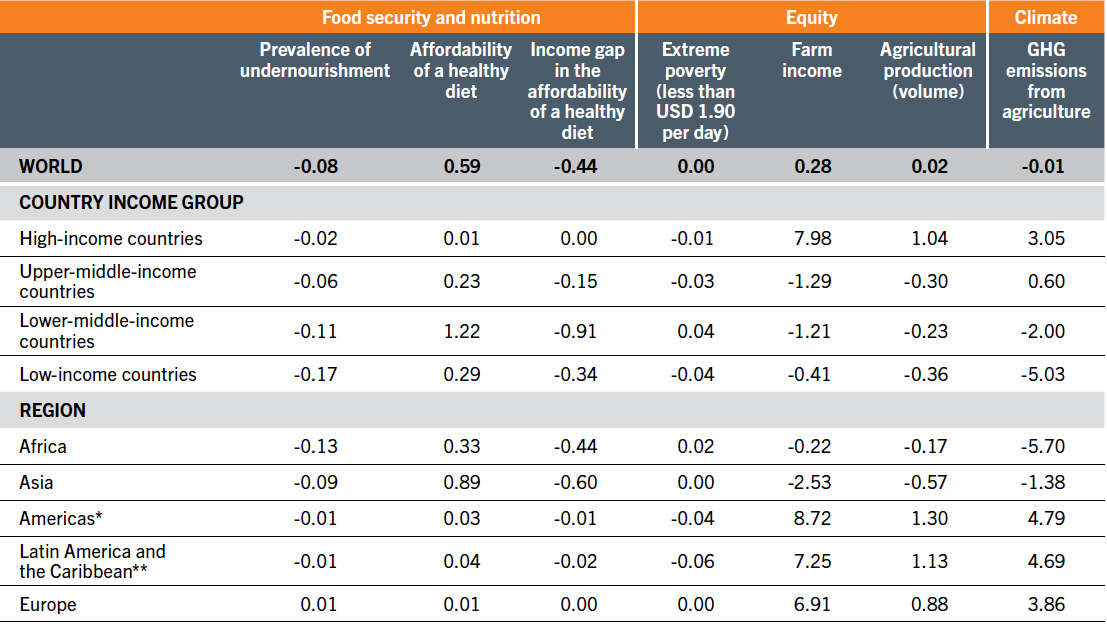
SOURCE: Glauber, J. & Laborde, D. (forthcoming). Repurposing food and agricultural policies to deliver affordable healthy diets, sustainably and inclusively: what is at stake? Background paper for The State of Food Security and Nutrition in the World 2022. FAO Agricultural Development Economics Working Paper 22-05. Rome, FAO.
TABLE A6.3Impact of removing fiscal support to producers, 2030 (change with respect to the baseline)
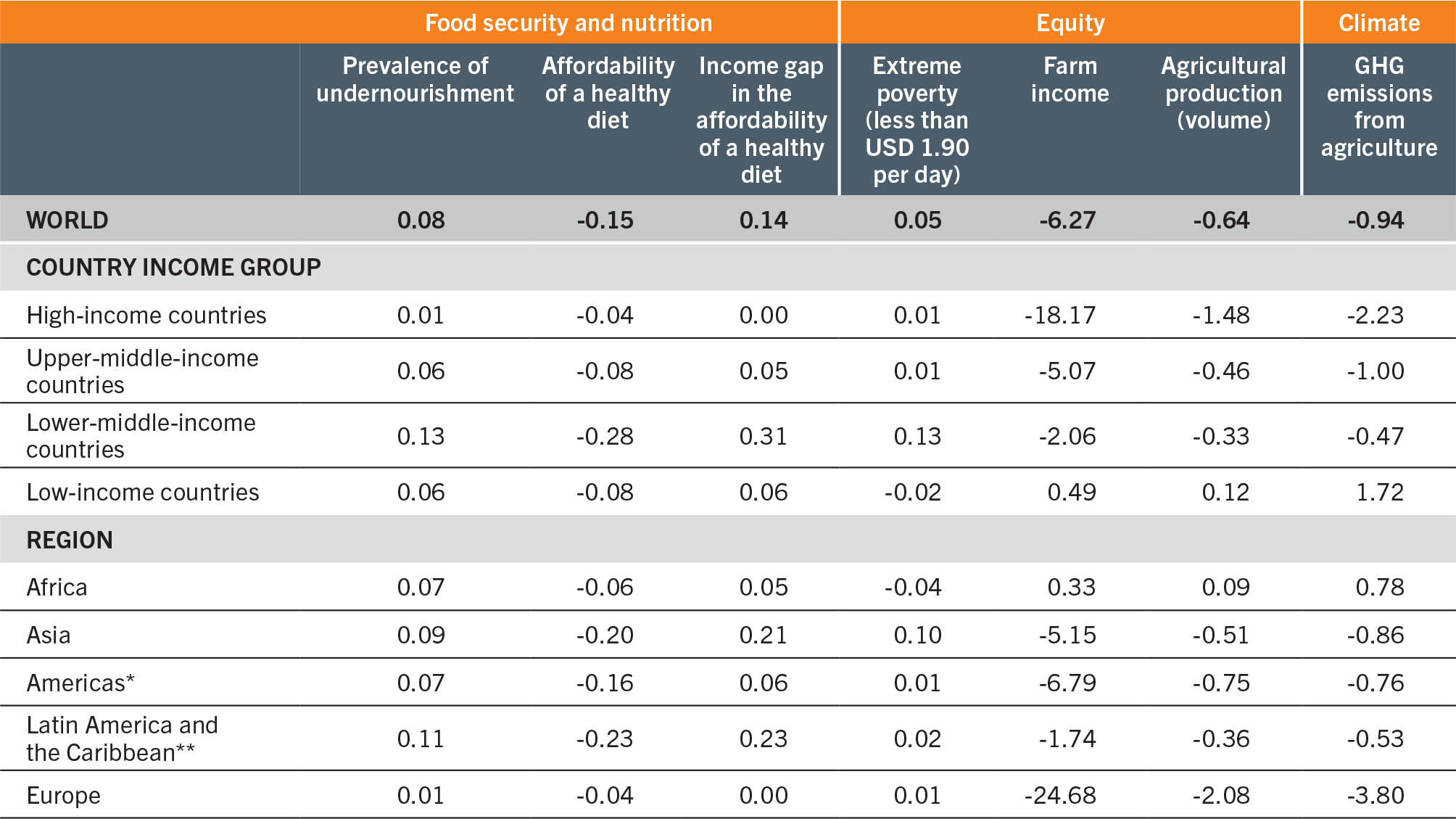
SOURCE: Glauber, J. & Laborde, D. (forthcoming). Repurposing food and agricultural policies to deliver affordable healthy diets, sustainably and inclusively: what is at stake? Background paper for The State of Food Security and Nutrition in the World 2022. FAO Agricultural Development Economics Working Paper 22-05. Rome, FAO.
TABLE A6.4Impact of redistributing fiscal subsidies to producers equally across food products, 2030 (change with respect to the baseline)
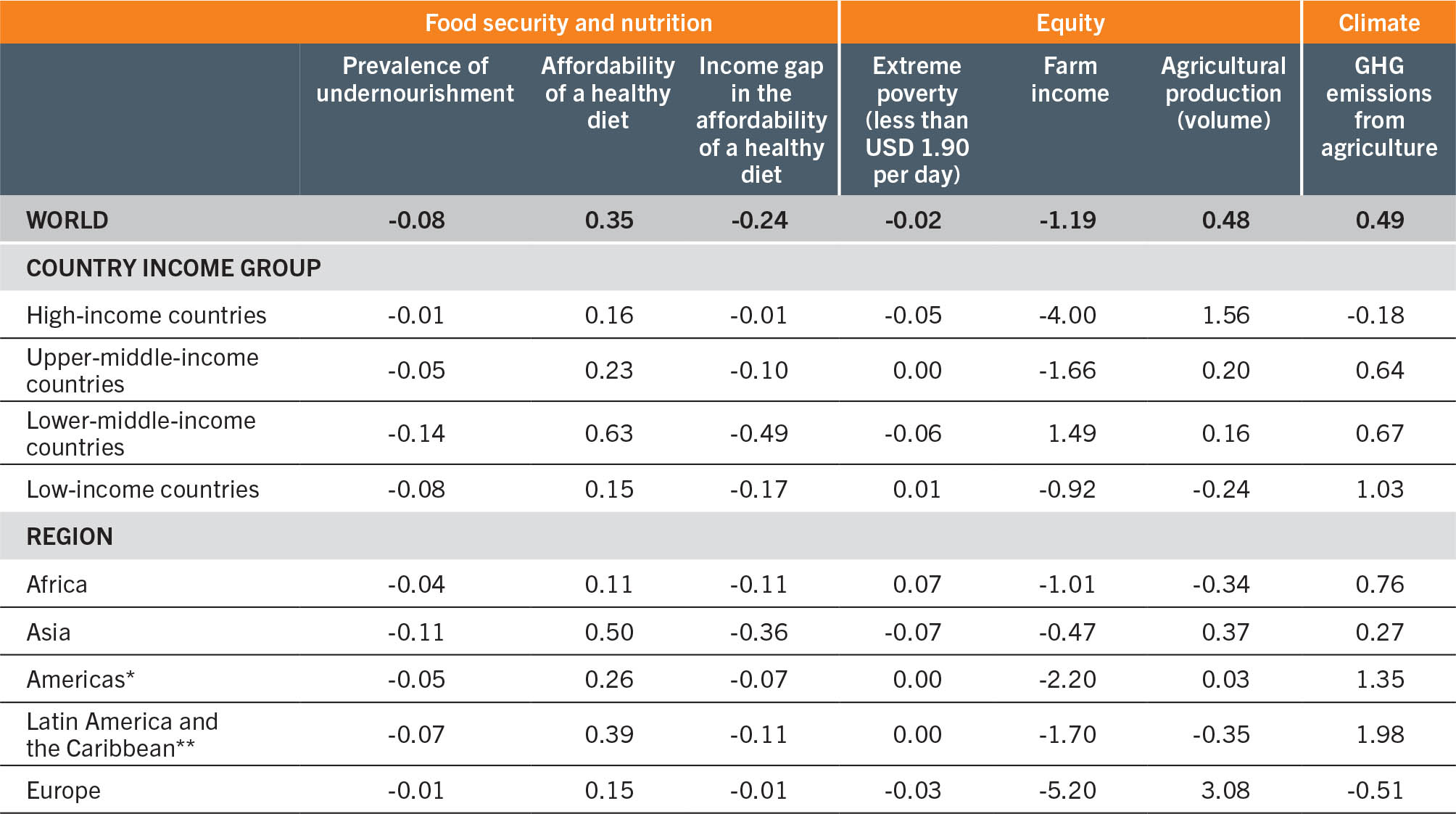
SOURCE: Glauber, J. & Laborde, D. (forthcoming). Repurposing food and agricultural policies to deliver affordable healthy diets, sustainably and inclusively: what is at stake? Background paper for The State of Food Security and Nutrition in the World 2022. FAO Agricultural Development Economics Working Paper 22-05. Rome, FAO.
TABLE A6.5Impact of redistributing fiscal subsidies to producers equally across food products on diet cost and per capita consumption, 2030 (percentage change with respect to the baseline)
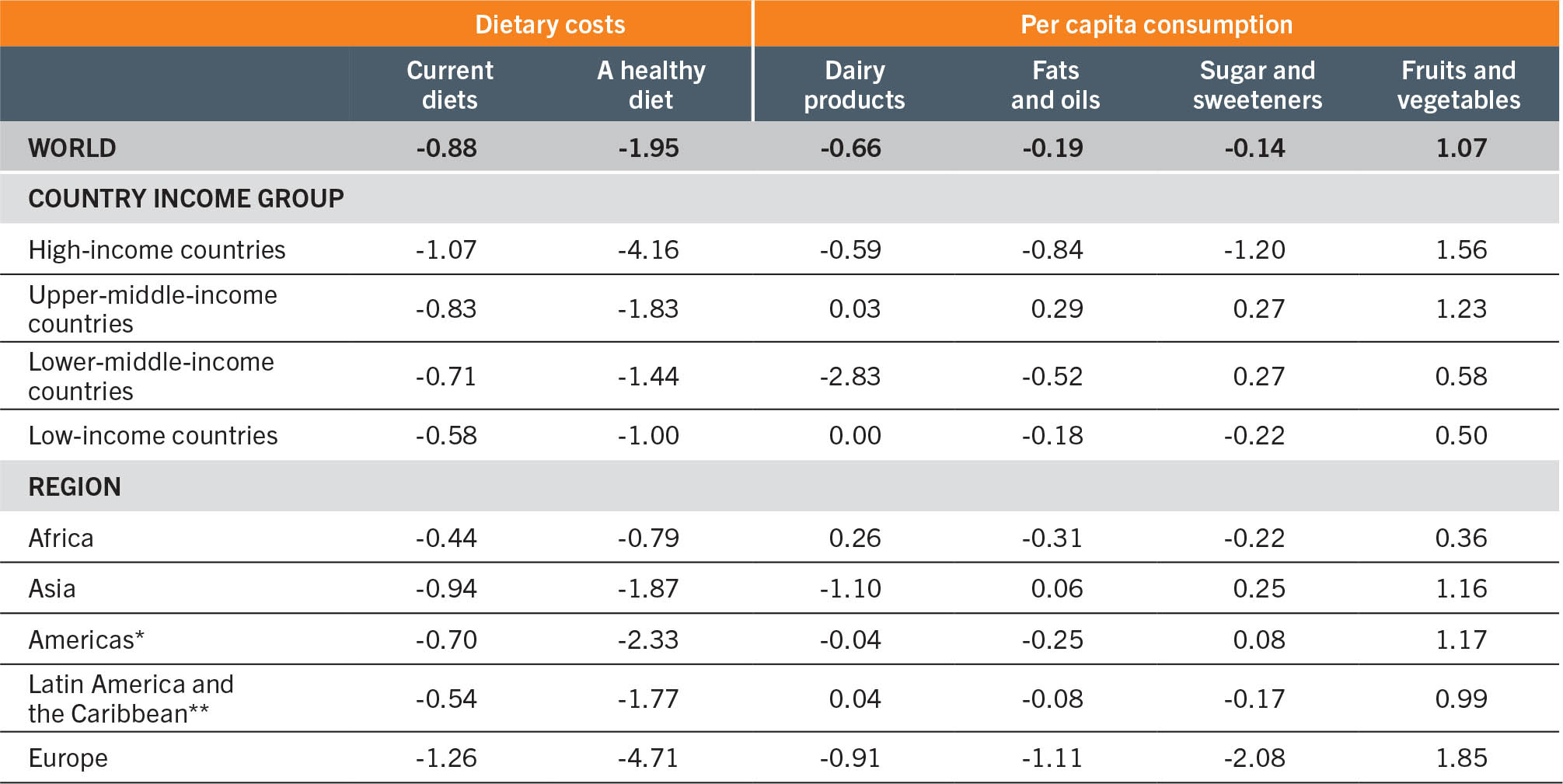
SOURCE: Glauber, J. & Laborde, D. (forthcoming). Repurposing food and agricultural policies to deliver affordable healthy diets, sustainably and inclusively: what is at stake? Background paper for The State of Food Security and Nutrition in the World 2022. FAO Agricultural Development Economics Working Paper 22-05. Rome, FAO.


